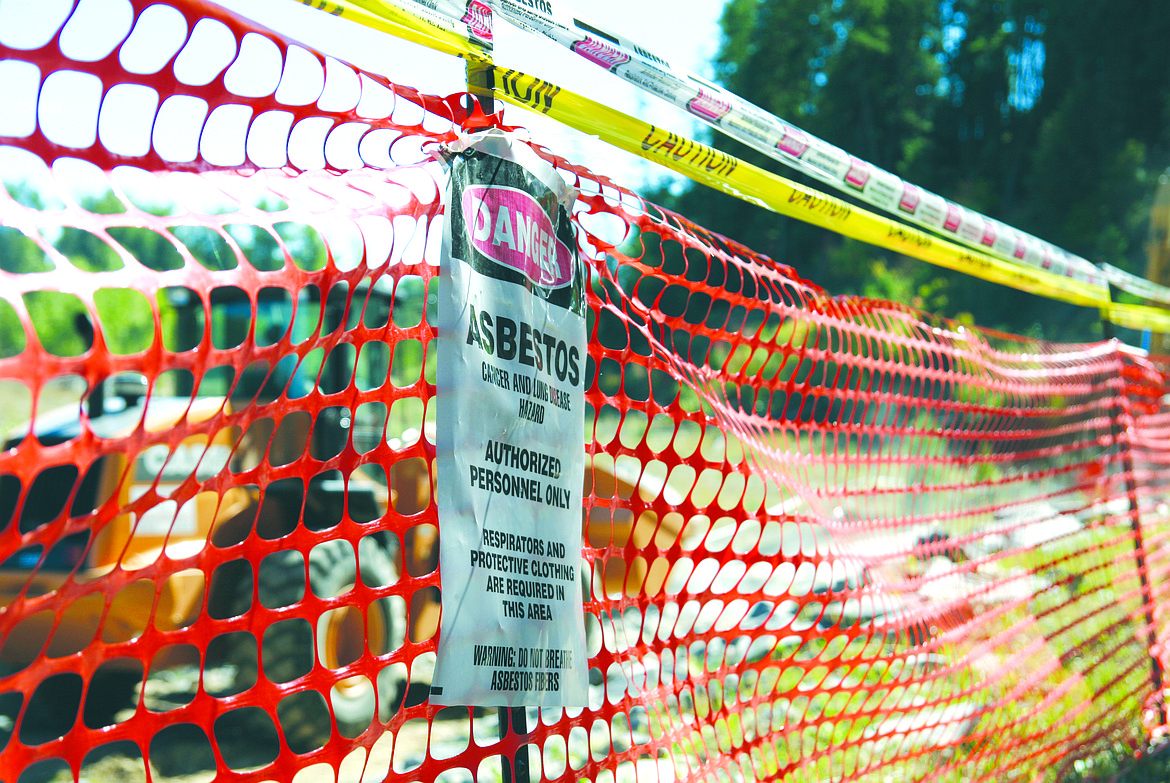EPA discusses last call, next steps with county
The EPA announced in July last year that March, 31, 2017 would mark the deadline for residential and commercial property owners in Libby and Troy to participate in the investigation and cleanup of Libby Amphibole asbestos.
EPA officials expect that less than 10 percent of remaining properties to be investigated are likely to need a cleanup.
The EPA has spent the last 16 years in Libby after setting up in the town that saw more than 400 asbestos exposure-related deaths due to the massive-scale asbestos-contaminated vermiculite mining at the W.R. Grace Mine in the area. Since then, the EPA has cleaned over 7,600 properties with 150 properties being cleaned in 2016.
Remedial Project Manager Mike Cirian told the Lincoln County Commissioners on Wednesday during their scheduled EPA update that while they have always been active in outreach with advertisement, letters, calling and knocking on doors, the cleanup of 10 percent of the remaining 600 properties is the best case scenario. As of Wednesday, Cirian said that they had 35 properties on the schedule and they’re shooting for 80.
Property owners who do not participate could become financially responsible for future cleanup, according to a press release issued on Jan. 10.
The EPA cleanups are offered for free to the public, and while the cleanups have been controversial in the past with many residents complaining of not being able to grow grass for many years after the cleanups, Cirian said that they have become better throughout their many years in Libby.
“We’ve had a really great turnaround in our public perception,” Cirian said. “In the past, we used to have quite a few callbacks on concerns that the yards were not growing, fence posts were wobbly…we’ve put a really concerted effort on looking how to grow soils and helping folks get back. Last year, we never had more than two callbacks on the list at one time, and they were generally answered within days if not hours.”
If necessary, outdoor property cleanups consist of removing contaminated soil and backfilling the area with clean soil. Indoor cleanups involve removing vermiculite-containing insulation from accessible areas inside homes and buildings. Contaminated materials are disposed of at a county landfill. EPA installs new insulation at locations where it is removed.
The “bittersweet” last call as many officials have called it since it was announced, will take away a large employer from the community, but also marks the beginning of the end of the superfund status.
“We’re making an effort to reach out to those people one last time,” Cirian said. “We need members of the community to encourage those [who haven’t participated] to participate. We’re at a point now where it’s free to them for us to come out and do it, and they have responsibilities to water their lawn and fertilize, things they would do anyway. As far as the removal and the restoration work, it’s all on the project, and it may not be that way in the future. When we’re done here and someone decides they need a cleanup — it might be on them.”
That’s a big concern for the commissioners is that, as of now, the plan that needs to be put in place after the EPA stops doing residential and commercial cleanups is still in it’s infancy. The EPA won’t be completely gone with a few cleanups on their to-do list including the W.R. Grace vermiculite mine. But after many years of knowing that someday they’d leave, the commissioners were left frustrated and concerned while Cirian tried to assure them that the lack of a plan isn’t out of the ordinary for these situations.
“A lot of places wait until they’re done before they start having these conversations,” Cirian said. “In a lot of ways we’re ahead, I wish we were further along myself.”
They plan on working with the county, DEQ, the EPA and the state to put their thoughts down on paper.
“We’re bumping up against a deadline,” Commissioner Mark Peck said. “We could essentially be left high and dry at the county level. I’m looking at the properties where it’s going to be left behind — that’s going to be a major cost. Regardless whether the homeowner pays for it or another entity else pays for it, the cost is going to be the same.”
While Cirian said that they have the costs over the last 10 years, they need to go in and pull out the numbers from the last three years to give an estimated cost during operational maintenance.
“Everybody has been talking about this for years and what this is going to look like, and it’s a little frustrating for me to sit here and say ‘we don’t know what that means yet.’ I find that really unacceptable,” Commissioner Mike Cole said. “We should really be further along than that...If you’re talking about this year being technically the last year of cleanups, all of sudden we’re staring at next spring with no plan.”
Cirian assured the commissioners that they have collected ideas from conversations they’ve had over the years, and now they’re getting down to specific ideas for the corroborative agreement. They are also looking to fund the Asbestos Resource Program for the next three years.
THE NEXT CONCERN is that, by next year, a lot of EPA employees that live in the area will be out of a job.
“In our world, when we do our job right we work ourselves right out of a job,” Cirian said.
They are also working on further planning through the Forest Service in the event of a fire at the Operable Unit 3, or the W.R. Grace asbestos mine site. They started the planning last August at the Forest Service Office where local, state and agency officials met to plan, approach and execute a coordinated effort in resolving a forest fire if a blaze were to ever come through OU3.
Property owners who have not yet participated in an investigation and/or cleanup need to sign access agreements by March 31. Access agreements have been mailed to property owners and are also available at EPA’s Information Center in Libby, 108 E. 9th Street; 406-293-6194.
EPA is providing this final opportunity to ensure the protection of future residents from possible exposures.



